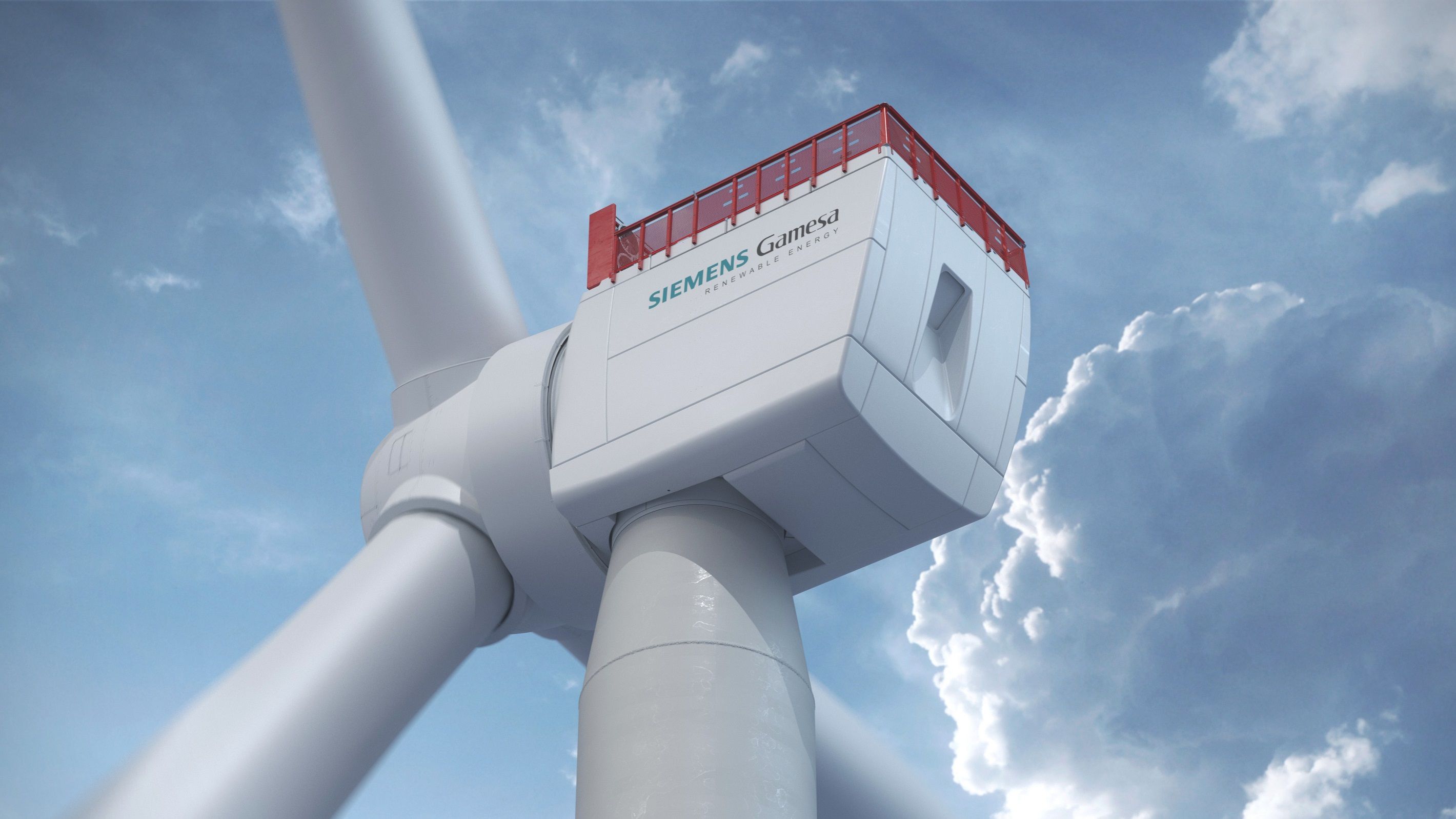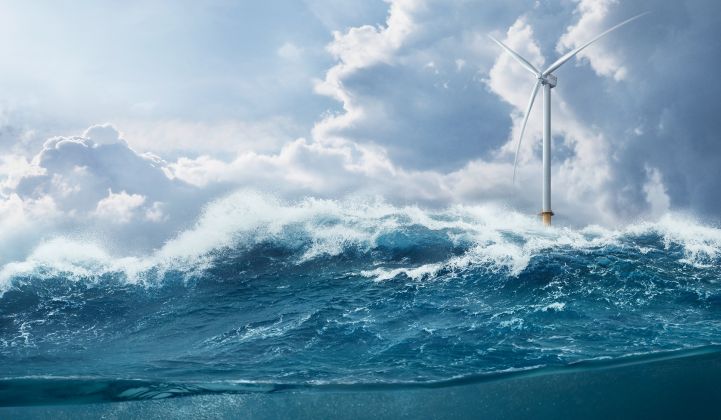Siemens Gamesa on Tuesday launched the largest wind turbine ever publicly announced, a 14-megawatt model with a 222-meter rotor diameter meant for offshore wind farms.
Morten Pilgaard Rasmussen, head of offshore technology at Siemens Gamesa, told GTM the company expects to confirm its first orders for the new turbine soon, with offers already out to a number of "global" offshore wind developers.
The launch puts Siemens Gamesa back in first place in the rankings for the largest offshore turbines on the market. GE revealed its 12-megawatt Haliade-X platform in 2018 and secured its first orders the following year.
A 14-megawatt version of GE's Haliade-X has been referenced in permitting documents, according to Shashi Barla, principal analyst for wind technology and supply chain at Wood Mackenzie. But Siemens Gamesa's 14-222 DD model has a slightly larger rotor diameter and can increase its rating to 15 megawatts using a "Power Boost" function.
With delays to projects in the U.S. that plan to use the Haliade-X, both Siemens Gamesa's and GE's 14-megawatt turbines could see their first projects commissioned around the same time, Barla said.
Siemens Gamesa expects to install a prototype of the new 14-megawatt model in Denmark by fall 2021. That won't stop orders being placed in the meantime: Offshore wind companies are used to ordering turbines still under development, given the long lead times of projects. Or as Rasmussen puts it, they’re used to buying “green bananas.”
Siemens Gamesa is the world's largest supplier of offshore wind turbines, with a wide lead over No. 2 MHI Vestas, whose largest available model today is 10 megawatts.
Bankability advantage to moving in smaller increments
Several years ago Siemens Gamesa considered jumping from 7 megawatts to 14 megawatts in one “disruptive” step, but it has opted instead for an iterative approach, Rasmussen said.
That same logic is behind the step up from 11 to 14 megawatts. "Our next machine will also be based on similar quality as we have today. We always add new technologies to allow for larger sizes. But we do that in a very, very controlled way so that we are as certain as we can be that we can ramp up [rapidly] when we deploy the machine,” Rasmussen said.
 The new turbine's nacelle will weigh 500 tons, considered lightweight by industry standards. (Credit: Siemens Gamesa)
The new turbine's nacelle will weigh 500 tons, considered lightweight by industry standards. (Credit: Siemens Gamesa)
WoodMac's Barla said the new turbine is a "quantum leap" for Siemens Gamesa, with a rotor diameter 10 percent larger than the previous model. But the technology platform will still be familiar to existing customers.
“They've upgraded this technology over the past eight years. From a project financing perspective [and] a bankability perspective, that gives immense confidence to the investors backing these projects,” said Barla.
For wind turbines, bigger isn’t always better
The launch of newer, larger turbines does not immediately render smaller options obsolete. Rasmussen said he expects the 8-megawatt version to continue being deployed deep into this decade. Developers will choose the best fit for their conditions, and Siemens Gamesa's iterative approach has left it with a wide range of options for sale.
Going big may not be an option for some customers, with permitting one potential obstacle. The bigger a turbine is, the more visible it is. Objections in France on visibility grounds have pushed projects farther out to sea. The country will host a floating-only offshore wind tender to enable projects to be built farther out to sea.
Bigger turbines may be the best choice for developers facing high installation costs as a result of tricky seabed conditions or long distances to shore. In easier-to-deploy settings, smaller machines may make the most economic sense, said Rasmussen.
Rasmussen declined to comment on how big turbines might get in the future, lest those numbers come back to haunt him, but neither he nor Barla can see the technology facing an unsurpassable ceiling.
Installation vessels will be able to erect 14-megawatt turbines, which are likely to be installed from 2024 onward, but they may struggle with even larger machines. Ultimately, however, financial concerns might set the limit.
“I think the technology can just keep going on and on, but the market will tell us when it's no longer feasible,” said Rasmussen. “I think, from a purely technical point of view, you could build a really large machine. But, like with ships or aircraft, there comes a point where it’s not economically viable anymore."
"We are not at that point yet,” he added.




